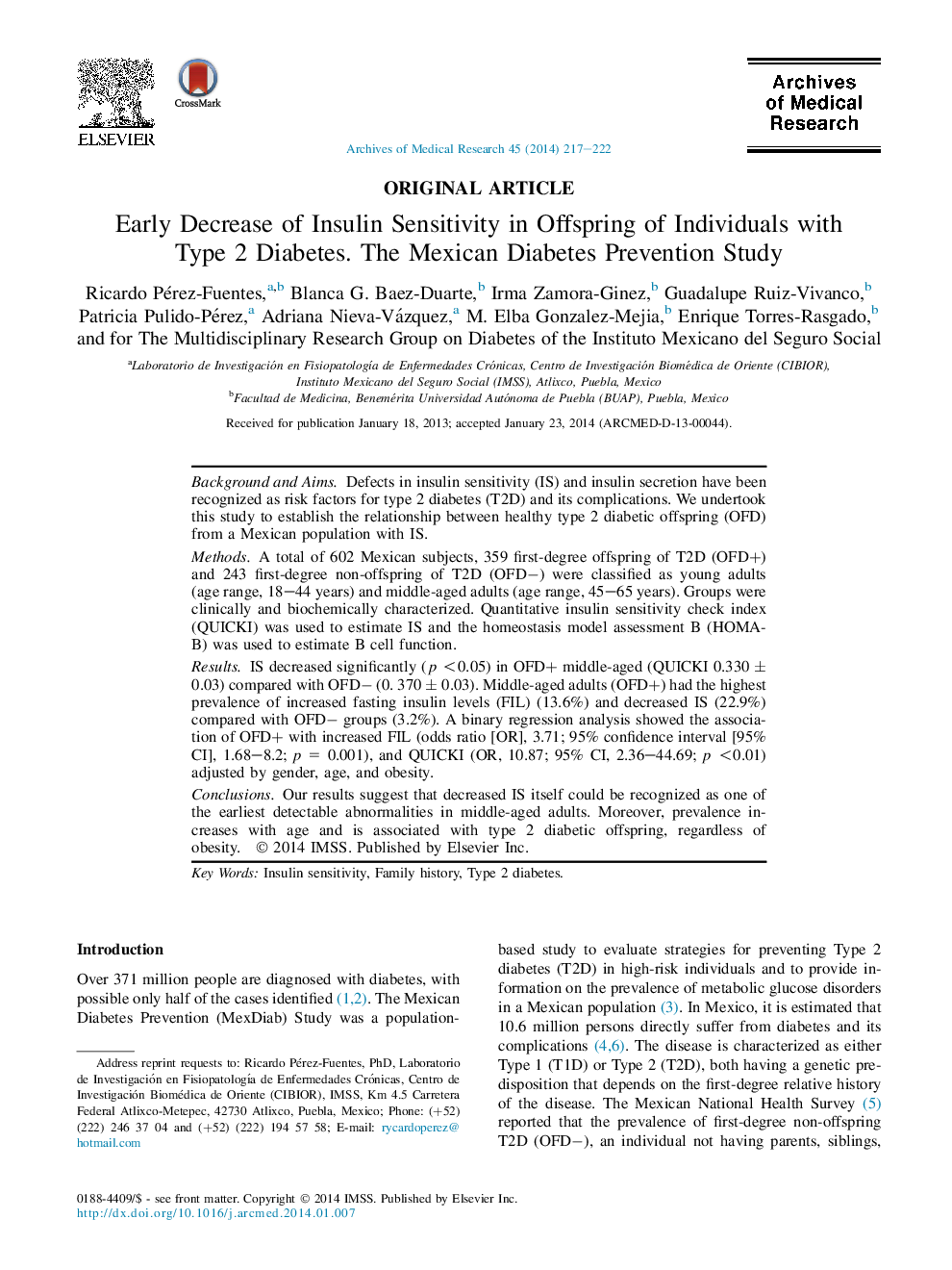| Article ID | Journal | Published Year | Pages | File Type |
|---|---|---|---|---|
| 3446488 | Archives of Medical Research | 2014 | 6 Pages |
Background and AimsDefects in insulin sensitivity (IS) and insulin secretion have been recognized as risk factors for type 2 diabetes (T2D) and its complications. We undertook this study to establish the relationship between healthy type 2 diabetic offspring (OFD) from a Mexican population with IS.MethodsA total of 602 Mexican subjects, 359 first-degree offspring of T2D (OFD+) and 243 first-degree non-offspring of T2D (OFD−) were classified as young adults (age range, 18–44 years) and middle-aged adults (age range, 45–65 years). Groups were clinically and biochemically characterized. Quantitative insulin sensitivity check index (QUICKI) was used to estimate IS and the homeostasis model assessment B (HOMA-B) was used to estimate B cell function.ResultsIS decreased significantly (p <0.05) in OFD+ middle-aged (QUICKI 0.330 ± 0.03) compared with OFD− (0. 370 ± 0.03). Middle-aged adults (OFD+) had the highest prevalence of increased fasting insulin levels (FIL) (13.6%) and decreased IS (22.9%) compared with OFD− groups (3.2%). A binary regression analysis showed the association of OFD+ with increased FIL (odds ratio [OR], 3.71; 95% confidence interval [95% CI], 1.68–8.2; p = 0.001), and QUICKI (OR, 10.87; 95% CI, 2.36–44.69; p <0.01) adjusted by gender, age, and obesity.ConclusionsOur results suggest that decreased IS itself could be recognized as one of the earliest detectable abnormalities in middle-aged adults. Moreover, prevalence increases with age and is associated with type 2 diabetic offspring, regardless of obesity.
